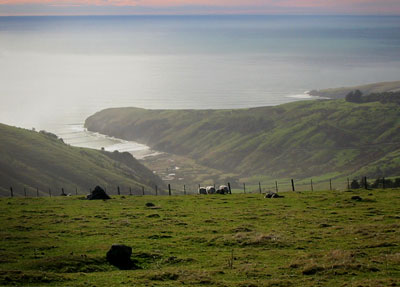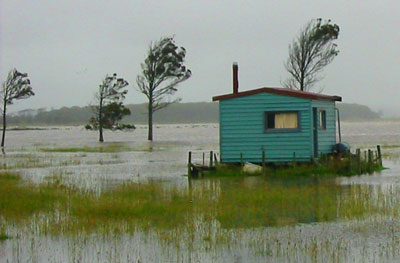 |
Sequence viewing > Aesthetics Index - Resource - ©
Lloyd Godman
Linear perspective - Vanishing
point
Aerial perspective
or atmospheric perspective
Aerial
perspective or atmospheric perspective is the effect on the appearance
of an object by the atmosphere between it and a viewer (or the technique
of depicting this effect in a work of art, such as a landscape painting).
As the distance between an object and a viewer increases, the contrast
between the object and its background decreases. The contrast of
any markings or details on the object also decreases. The colours
of the object also become less saturated and shift towards blue. |
|
|
Aerial perspective
was discovered and named by Leonardo Da Vinci, who used it in many of
his works, such as the Mona Lisa, in order to suggest distance. In such
early paintings the distant objects tend to be represented as gray-green.
The
major component affecting the appearance of objects during daylight
is scattering of light, called sky light, into the line of sight
of the viewer. Scattering occurs from molecules of the air and
also from larger particles in the atmosphere such as water vapor
and smoke. Scattering adds the sky light as a veiling luminance
onto the light from the object, reducing its contrast with the
background sky light. Skylight usually contains more short wavelength
light than other wavelengths (this is why the sky usually appears
blue), which is why distant objects appear bluish. |
|
|
| A minor
component is scattering of light out of the line of sight of the
viewer. Under daylight, this either augments the contrast loss
(e.g., for white objects) or opposes it (for dark objects). At
night there is effectively no skylight (unless the moon is very
bright), so scattering out of the line of sight becomes the major
component affecting the appearance of self-luminous objects. Such
objects have their contrasts reduced with the dark background,
and their colours are shifted towards red. |
|
 |
| It is important to emphasize
that aerial perspective does not blur the outlines or the markings of
objects. Objects appear less distinct because of the reduction in contrast.
To illustrate that the air does not blur objects, one can look at the
edge of the moon when it is on the horizon. Despite the light path being
the longest possible through the atmosphere, the edge of the moon looks
sharp. |
|
 |
In art, aerial perspective
is used to describe the painting technique of creating depth by depicting
distant objects as paler, less detailed, and bluer than near objects. |
|
 |
(One caution: in
common speech, the words perspective and viewpoint tend to be used interchangeably;
however, in art, aerial perspective does not imply an aerial viewpoint,
such as that forming the basis of the aerial landscape genre.
|